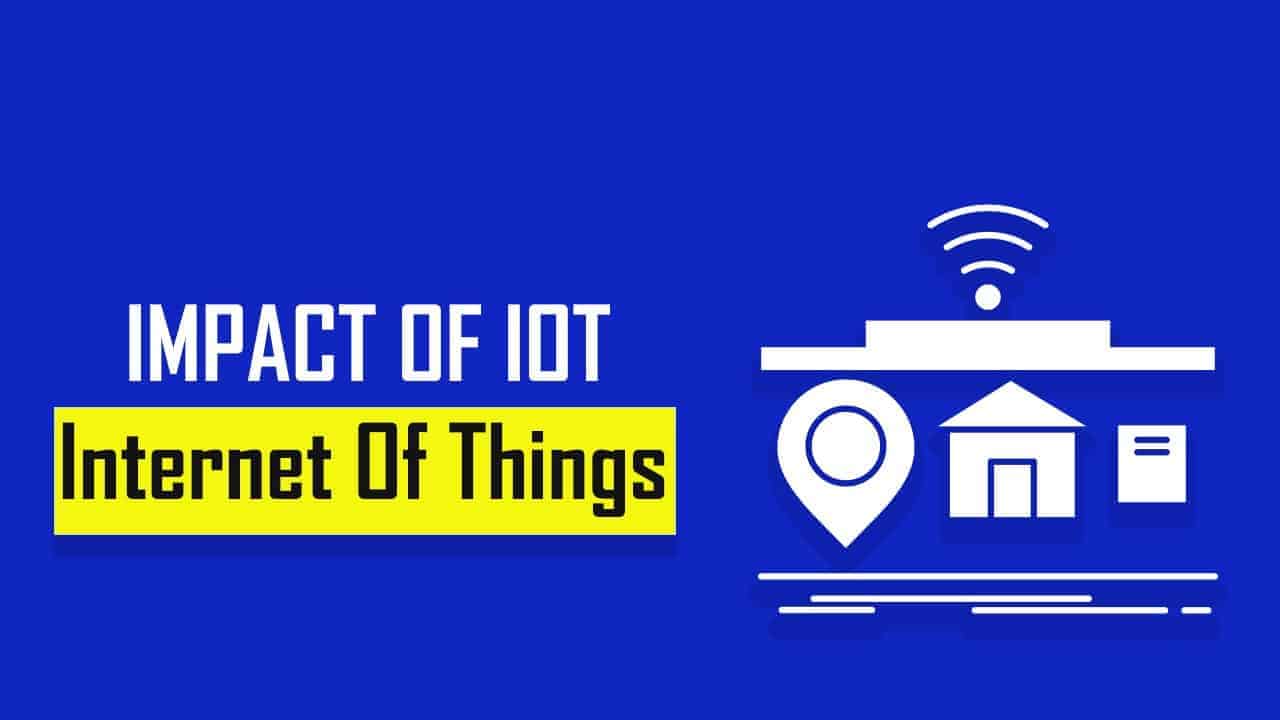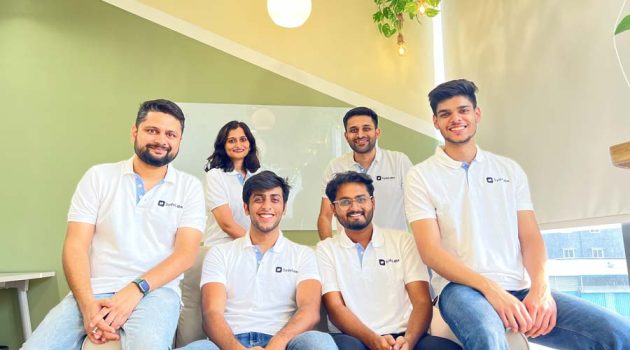The Internet of Things (IoT) has been a popular topic since its induction. The world saw a rise in connected devices in 2010. According to the Cisco Internet Business Solutions Group, with over 12 billion devices connected to the Internet and a world population of 6.8 billion, for the first time, the number of connected devices was more than one per person. In a recent report from the International Data Corporation (IDC), Worldwide Global DataSphere IoT Device and Data Forecast, 2019-2023, there will be an estimated 41.6 billion connected IoT devices in 2025. These devices will generate 79.4 zettabytes (ZB) of data.With a wireless network built on 4G technology, the number of devices the network can support is too low to realize the full potential of IoT. We now see an increased integration of 5G. This next generation of wireless technology adds speed, lowers latency, and supports high numbers of connected devices. The infrastructure required to support 5G will expand – extending more opportunities to increase the integration of IoT throughout our society.
With these recent advances in wireless technology, an IoT connected world is more than just an idea. It is becoming a reality. IDC estimates over 152,000 IoT devices per day will be connected to the Internet by 2025 – primarily due to the growth of 5G networks. With increases in the strength of our wireless infrastructure, we will see an exponential rise in the number of connected devices.Each connected IoT device collects real-time data and shares it with other devices on the Internet. More connected devices increases the load on the network and requires high energy consumption, reducing the battery life of IoT devices. With 5G, more connections will not strain the network, and energy consumptions will drop by as much as 90 percent. The lowering of the energy consumption of IoT devices will extend their battery life up to 10 years. (Source: National Institute of Standards and Technology) With a robust 5G infrastructure in place, the number of IoT devices will expand rapidly. With the growth in IoT devices, how will IoT impact various sectors? How will it impact our environment? Let’s explore several industries and the impact IoT.
Impact of IOT on Healthcare
The use of IoT devices in the healthcare sector has the sole purpose of adding efficiency. AI and automation advancements are helping in the identification and elimination of disease. Higher numbers of connected IoT devices in healthcare will extend into our homes, assisted living environments, in-home healthcare practices, and more. Healthcare monitoring and treatment will shift from physical visits to clinics or doctors’ offices to more convenient and accessible locations, thus improving efficiency. Healthcare will become more preventative, increasing our quality of living.

The collection and processing of data is critical to success in medicine. With IoT devices sending data from everything from thermostats to MRI machines, data are stored, combined, and analyzed with high speed and accuracy. As parents and individuals purchase home medical devices to measure blood pressure, temperature, blood oxygen level, insulin levels, and much more, new healthcare improvements surface through the consistent use of these IoT devices. Measurements are automatically sent to physicians. Instead of waiting for a condition to worsen, preventative actions will be taken, lowering the need for expensive and invasive treatments.With IoT in healthcare, we will have a better quality of life. Our population will become healthier, resulting in lower healthcare costs and increasing availability to specialists and more extensive research.
With the Covid-19 pandemic, we have seen a surge in the use of telemedicine. It has been available for years, but doctors and nurses did not have enough data to provide a complete diagnosis for many ailments. With IoT devices embedded in equipment we already use in our homes and more tools becoming available, the effectiveness of telemedicine is taking a giant leap forward. A more accurate and complete telemedicine diagnosis will lead to fewer office visits, lowering healthcare costs.
Impact of IOT on Energy
Recently, Pramod Dhakal at Hitechies conducted a podcast with Ellen Boehm, Sr. Director of Product for Keyfactor Control. When asked about IoT’s consumption of energy, she said, “The more data you collect, the more models we can build to determine how much of a resource we are using.” IoT will collect data from meters, traffic-light sensors, and even streetlights. She commented that an IoT device in streetlights could automatically reduce the amount of light generated base on the amount of traffic in the street, people walking in the area, and other factors. This dynamic adjustment of brightness will reduce energy consumption, lowering costs while improving value.
“The more data you collect, the more models we can build to determine how much of a resource we are using.”

IoT devices will become more prevalent in machinery used in many industries, including oil and gas. Analysts at Nomura, a global financial services group, predict IoT will increase the oil and gas industry profits while reducing their production by as much as 30 percent. This is a positive gain for both the environment, as well as the sector.Many daily activities involve IoT devices. In homes, smart thermostats monitor and adjust temperatures, reducing the use of energy. Cars are more fuel-efficient with the addition of IoT devices. IoT devices perform more quickly and efficiently than humans when it comes to the conservation of energy in many aspects of our lives.
In 2025 as we have 70 billion IoT connected devices, the annual energy consumption from the IoT interfaces in these devices would total 143 TWh. To put it in perspective, if IoT were a country, it would be amongst the 30 highest consumers of electricity, using more energy than countries like Belgium and the Netherlands.
Impact of IOT on Agriculture
The world’s population continues to grow, predicted to reach 9.6 billion by 2050. The resources necessary to support our growing population will require new, innovative advancement in many industries – agriculture being vital in these changes. Farming processes must be made more efficient and significantly increase production. IoT devices have a critical role in meeting these needs.Smart farming is a system of IoT devices, providing data on soil conditions, moisture levels, weather conditions, and more, keeping growing conditions optimal and increasing overall yield. IoT devices are used on farm equipment to optimize use and maintenance. Just like self-driving cars, farm equipment can be automatically operated by technology. With a 5G network in place, real-time decisions can be made while heavy machinery is in use. IoT facilitate a change from planting and harvesting to the advancement of crop discovery and growth technique.

As an example of how one company is providing IoT solutions to farmers, Vodafone’s Precision Farming solution connects IoT devices through its network, maintaining connections and ensuring the continuous collection of data. One application of this solution provides more control to farmers applying fertilizer to their fields. With the inclusion of GPS in devices, the farmer knows where fertilizer has been applied and how much. The farmer can adjust the location and rate of application, eliminating waste and better preparing the soil for optimal crop production.There are other examples of the use of connected IoT devices in agriculture. IoT can provide this high level of precision and efficiency to each step of the farming process. These independent applications can be connected, including the harvest, distribution, processing, and delivery to consumers to create a complete production and supply chain.Blockchain technology can connect this production and supply chain to property management, banking, inspections, compliance, and other components necessary in a successful farming business. The use of blockchain technology opens the door to increased automation and higher efficiency, improving the experience of the farmer and providing a steady supply of safe foods to consumers.
Impact of IOT on Job Sector
A two-year study conducted by the McKinsey Global Institute suggests AI could replace up to 30 percent of our current labor force by 2030. A large percentage of displaced workers would be required to move to a new job category. These types of numbers raise concerns and fears, particularly in the world’s most vulnerable countries.During the Industrial Revolution, workers were concerned with a similar shift loss of jobs. Protests and riots erupted in an effort to stop the move to automated manufacturing.

In the end, with the inclusion of manufacturing automation, the net number of jobs increased. Concerns and fears were mitigated, and the economy grew stronger. With the rapid increase of IoT devices in today’s industries, similar worries exist. The Wall Street Journal published a piece titled “The Robots Are Coming. Welcome Them.” The article included the following statement:
“Simply put, jobs that robots can replace are not good jobs in the first place. As humans, we climb up the rungs of drudgery – physically tasking or mind-numbing jobs – to jobs that use what got us to the top of the food chain, our brains.”
Again during the podcast session with Ellen Boehm, when asked about the impact of IoT on jobs, she replied, “If we’re automating tasks and capabilities that can be done by a machine, then … we’re freeing up our intelligent brains and [the] talent in our employees. Your people [can] help develop the next generation product, making your overall organization more efficient – shifting people to work on something more impactful.”IoT will eliminate the need for job positions prevalent in our workforce today, but IoT will create new jobs as industries increase in efficiency and production. Most of the new jobs created will require retraining of displaced workers. This retraining effort will require time and effort by the trainees. New jobs created by IoT will be in software engineering, data science, electronics, and other areas of technology. There will be a need to monitor, replace, and repair IoT devices. Some industries will still require a human presence in newly automated processes, especially where there are strict compliance requirements.
Impact of IOT on Environment
A 5G wireless network will result in very efficient IoT devices. With the low-latency and speed enhancements, response time will be near real-time. 5G technology enables IoT devices to lowers energy consumption. They will no longer need to be “always-on” since they will not necessarily always be needed.

With the manufacture and protection of an increasingly large number of IoT devices, there will be an impact on our environment. It will not come as an increased consumption of energy, but in the materials used in these devices, their manufacture and disposal. While talking about the impact of IoT devices, he comments that as producers of this equipment, we have to be keenly aware of “what impact do the electronics have on the environment.” He continued, “[It’s] about consumption, but also about good corporate citizenship.”The impact of IoT on our environment will depend on the degree of ownership each contributor takes to protect our planet. We must use green technologies, materials, and practices in all phases of the lifecycle of IoT devices.
Impact of IOT on Security
IoT exposes much higher volumes of data into our internet traffic. A new, robust 5G infrastructure will easily handle the volume increase, but IoT must address the increased security risks and ensure the reliability of its devices. We must secure these data collected from IoT devices.Many of the devices used in IoT are sensors and do not send highly sensitive information. Still, others, such as those used in healthcare, finance, education, and government must contain safeguards against the increase of cyber threats and attacks. The success of IoT depends on secured and accurate data.

The security sector has made significant gains using AI in their implementations and tactics. IoT devices will increase the data available to perform an in-depth analysis of new tactics used during attacks, facilitating a deep-learning process to predict future threats and develop preventive safeguards against them.
“Most environments we are pushing IoT into are challenging,” referring to traditional mechanical areas, such as valves, pumps, and motors.” In these environments, not only is the protection of data crucial, IoT devices have to be durable and reliable. Increased security and durability will be vital to the success of IoT.
In addition to security, IoT devices must address durability issues. While security is on everyone’s list, often overlooked is the durability and availability of IoT devices. Attacks on IoT data must be prevented. Ensuring the stability of IoT devices presents its own risks. Imagine the consequences of IoT sensors failing in the oil and gas sector. The failure or misfunction of an IoT device in an MRI machine or monitoring equipment in an Intensive Care Unit (ICU) in a hospital.IoT devices are being integrated into equipment and places not designed for sensitive electronics.
Stephen Gold, Chief Commercial Officer at HZO, commented in a Hitechies podcast with Pramod Dhakal, “Most environments we are pushing IoT into are challenging,” referring to traditional mechanical areas, such as valves, pumps, and motors.” In these environments, not only is the protection of data crucial, IoT devices have to be durable and reliable. Increased security and durability will be vital to the success of IoT.
Conclusion
It is widely accepted that AI and automation have a significant impact on our lives. The effect of the massive addition of IoT devices to the Internet is not quite as clear. Questions and concerns may be due to a lack of understanding of what IoT is and where it is used. More knowledge and implementation details will help alleviate fears and misconceptions. IoT is rapidly expanding into more industries.When we look at industries using IoT devices, we can see the benefits and can notice the impact. The prerequisite need for a robust 5G infrastructure will be slow IoT reaching its full potential. Fears and concerns surrounding IoT will dissipate as the number of connected IoT devices increases. The benefits will be realized and will drive a push for more IoT devices to be added at a faster rate.









